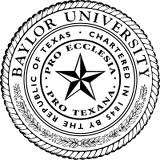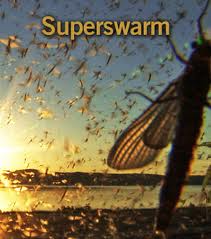 California lawmakers decided to approve legislations about establishing the nation’s most challenging renewable energy sources, although some of them have warned that such rules could hurt California’s economy and increase energy costs.
The Senate and Assembly started to vote on two associate bills, which would require some utilities to have at least one-third of their power sources from renewable energy.
Through a simple vote in the Senate’s regular legislative session, one of the bills cleared its initial hurdle.
Governor Arnold Schwarzenegger of California agreed to raise the state’s renewable standards for up to 33%, and bring in more energy sources through geothermal, wind and solar means. However, the governor still has to take a stand on the bills.
Most of the Republicans opposed the legislation. They also objected to a provision that would prohibit California from buying power utilities from other alternative sources outside the state. They also said that it could increase costs for consumers and utilities.
“I don't want to see that we craft a policy that hurts California. These measures could potentially make California the greenest Third World economy in the world”, said R-Palm Desert Senator John Benoit to his colleagues.
In the meantime, the two bills which were drafted by Assemblyman Paul Krekorian and Senator Joe Simitian, would allow utilities’ importation of renewable energy outside California provided that the power source would come from a plant connected to the state’s electricity line.
 British Telecom (BT) believes their new fixed-line broadband technology can help the government achieve its targets, as presented in the latest Digital Britain report. Specifically, BT wants to address the government’s plan to provide access to high-speed Internet of at least 2Mbps across the United Kingdom.
BT based its trial system, called Broadband Enabling Technology (BET), on the current technology utilised for the business class. The said technology offers considerably high-speed access to the Internet, which is more extendable compared to previous technologies.
John Small, the service delivery managing director of BT Openreach, said, “We're really excited about the potential of BET to extend broadband to the remaining not-spots. By rolling out BET, we can help customers and assist the government to realise its aim for a universal 2Mbps broadband service."
BT claims that BET has a broadband coverage of 12km at most, which is far greater than ADSL’s standard limit of 5km. It can reach 1Mbps speeds for both directions. Higher speeds would require bonding multiple lines together and 2Mbps requires two lines. BET was patterned on an existing technology called Single-Pair High-speed Digital Subscriber Line (SHDSL). Since 2001, SHDSL has been campaigned as a substitute for ADSL.
Openreach is currently testing BET in the Scottish towns of Dingwall and Inverness. The company plans to unveil the technology in eight UK sites.
However, the competitors of BT argue that satellite, mobile or wireless services would be better in remote areas.
 The proboscis of a butterfly resembles a straw, as it is long and slender, and is primarily used to sip with. However, Konstantin Kornev from Clemson University states that it works more similarly to a paper towel when sucking up fluids. He plans to adopt this insect’s technique to create small probes, which can extract fluid samples from within cells.
Kornev’s work will be presented at the American Physical Society’s 62nd Annual Meeting of its Division of Fluid Dynamics from 22–24 November at the Minneapolis Convention Centre.
These insects live at a scale so small that fluids is thick enough to form fibres. Their foods, such as water droplets, flower nectars, animal tears, and fruit juices, have a viscosity of almost three orders of magnitude; hence, siphoning these viscous fluids through their proboscis would require great amounts of pressure.
“No pump would support that kind of pressure”, Kornev states. “The liquid would boil spontaneously”.
His findings indicate that rather than pumping, butterflies suck the liquid upwards by means of capillary action; the same type of force that draws liquid through a paper towel. An insect’s proboscis functions like a rolled-up tissue paper, with small channels that draw the liquid upwards and along the edges while moving the drop of liquid along the centre of the tube. Capillary action is not as affected by a liquid’s viscosity as compared to pumping.
 A study on broadband throughout the world discovered that the United Kingdom’s broadband network quality is 25th in a field of 66 countries.
The study, which was conducted on Cisco’s behalf, aimed to provide a thorough examination of broadband’s state throughout the world.
The study discovered that Bulgaria and Latvia are more prepared for next-generation internet applications than the United Kingdom.
Japan and Korea still dominate the table, because they have fast networks.
For example, the government of Korea has promised to have 1Gbps (gigabit per second) as its universal speed by 2012.
Though the United Kingdom is not ready for the applications of the future, it can handle today’s network demands.
"It can be a bit misleading to look at the rankings. The important thing is whether the broadband quality of a country is good enough for today's needs and the UK falls well within this category", said Joanne Hughes, Cisco’s communication manager.
Hughes expects that the United Kingdom would improve next year.
"We forecast the UK will improve because of things such as cable networks being upgraded and the Digital Britain report focusing on next generation access", Hughes said.
The University of Oviedo's Department of Applied Economics and Oxford University's Säid Business School jointly conducted the study.
 Researchers from Baylor University have identified a major component that enhances the toxicity of Prymnesium parvum, also known as golden algae, which kills numerous fish in the southern US every year.
This research is the first to identify the cause of increased toxicity of golden algae in inland bodies of water. The results of the study were published in the journal Toxicon.
Although golden algae are mostly coastal species, some have been discovered in lakes and rivers in Texas. Scientists understand that some environmental factors affect toxin production. The new research indicates that once toxin is discharged, its tendency to harm the environment is affected by the water’s pH level. Toxins are more potent when in water with higher pH, which the researchers say is remarkable since blooms can in fact increase the water’s pH level.
Researchers analysed the toxicity and pH levels of some lakes in Texas known for large fish kills from golden algae. They carried out laboratory experiments to confirm their findings, and they also used some computational models to analyse the physicochemical properties of the algae’s toxins and pH levels. Researchers revealed that as the lake’s pH level increases, the algae’s toxicity also increases.
“These results suggest that at least some of the identified toxins released by golden algae are weak bases. Consequently, in-reservoir pH may substantially influence their availability, fate, and ultimately their toxicity”, stated Ted Valenti, a doctoral student in Baylor and also the lead writer of the article.
 A team of researchers has been investigating how krill form their superswarms–one of the biggest organism gatherings on the planet.
Trillions of juvenile krill gather into superswarms in the oceans of the southern hemisphere. For example, in the Antarctic, the Euphausia superb, a species of krill, forms superswarms that extend for kilometres.
How or why the krill do it, however, remained a mystery until recently. British Antarctic Survey (BAS) scientists, led by Dr Geraint Tarling of Cambridge University, decided to go to the crustaceans’ habitat in an attempt to find out. They went to the Scotia Sea, an area lying between the Antarctic Peninsula and South Georgia, armed with echo-sounding equipment and they studied more than 4500 various krill swarms.
The scientists discovered that krill swarms are of two types: small and large. Adult krill make up the small swarms while the large swarms are made up of juvenile krill.
Small swarms are not very dense (around 10 krill per cubic metre) and measure approximately four metres deep and 50 metres long. Large swarms, or superswarms, can have ten times more krill per cubic metre than the small swarms and measure approximately 30 metres deep and up to many kilometres long.
The researchers also found that large swarms had the tendency to form when less food was available, but exactly why they form them is still unclear. Dr Tarling offered a possible explanation, saying that large swarms protect the individual krill from predators. It also helps them conserve energy, therefore, making the juvenile krill grow faster.
 Google Labs focused more on online picture searching, on Tuesday, with a ‘Swirl’ tool that groups images of the same category automatically on search result pages.
“What Image Swirl does is it really organises automatically image search results into groups and sub-groups,” Aparna Chennapragada, product manager of Google, told AFP.
“It's not just the face, the colour, the visual features of the images; we look inside the image and ask how they relate to each other on a pixel level,” he added.
‘Swirl’ uses facial recognition software, metadata and algorithms to differentiate places, people, structures and time of day of the digital images.
For instance, the keyword ‘Washington’, inputted to the Image Swirl, generates result pages with images grouped into subsets, such as former President George Washington, the White House, and even movie star, Denzel Washington.
Clicking on one of the subsets opens up a window to additional ‘sub-clusters’ of images grouped by factors like time of day, angle and even whether a picture is a panorama or a close-up.
Online search for images has conventionally presented result pages with thumbnail images that individuals search through separately.
“As humans we can easily tell which images should be grouped together by looking at them,” stated Yushi Jing, software engineer of Google, who worked on the Image Swirl technology.
“The real question is can we train computer algorithms to identify common features in images and then categorise them. It's not perfect. We may have mistakes, but we hope to improve this system as we move forward,” he added.
 Ceramics, dated 5,000 years old, have been recovered from the Pavlopetri, the oldest submerged town in the world. This discovery suggests that the town, which lies off the southern coast of Laconia, Greece, had been occupied as early as the Final Neolithic period–1,200 years than earlier thought.
The Pavlopetri Underwater Archaeology Project is a five-year collaborative effort between The University of Nottingham and the Ephorate of Underwater Antiquities of the Hellenic Ministry of Culture. Its main goal is to determine the exact period when Pavlopetri was occupied and what its purpose was. Also, the team wants to know how it ended up submerged.
Pavlopetri was a Mycenaean town. The discoveries made from the site gave scientists and anthropologists clues regarding how the Mycenaean society worked.
A digital underwater survey and a study of structural remains had been carried out by the research team this summer. The survey revealed another set of buildings covering an area of 150 square metres. Their investigations revealed that the site had been occupied as early as 2800 BC up to 1100 BC, a timeframe covering the whole Bronze Age.
The project’s co-leader, Dr Jon Henderson of the Department of Archaeology in Nottingham, said that they have uncovered an almost complete town plan which included courtyards, domestic buildings, tombs, seabed, religious buildings, and the main streets. He also said, “the study of the archaeological material we have recovered will be extremely important in terms of revealing how maritime trade was conducted and managed in the Bronze Age".
 The team responsible for building the High Accuracy Radial Velocity Planet Searcher (HARPS), the European Southern Observatory’s (ESO) 3.6-metre telescope’s spectrograph, has reported the discovery of 32 new exoplanets. This discovery increases the number of low-mass planets found by 30%. HARPS brings its total of discovered exoplanets to over 75 of the total 400 known.
Stéphane Udry, the team’s spokesperson, described their work: “HARPS is a unique, extremely high precision instrument that is ideal for discovering alien worlds. We have now completed our initial five-year programme, which has succeeded well beyond our expectations”.
HARPS’s over 75 discovered exoplanets were from 30 different planetary systems. The spectrograph’s precision has made hunting for small planets–those with masses just a few times of the Earth’s, known as super-Earths–relatively easier. HARPS has spotted 24 of the 28 planets less than 20 times heavier than Earth. Like the previously discovered super-Earths, a majority of the new prospective low-mass planets belong to multi-planet systems that are composed of five planets each, at most.
The ESO called for the building of a very precise spectrograph for its 3.6-metre telescope in La Silla, Chile. The Geneva Observatory’s Michel Mayor led the consortium that built the HARPS. They installed the spectrograph in 2003, which soon after started to detect the radial velocity of stars, therefore measuring their back-and-forward motions. The HARPS can detect radial velocities as slow as 3.5km/hour. The precision of the radial velocity method has made it the most effective way of finding exoplanets.
 UK Prime Minister Gordon Brown is the first leader who offers to go to the capital of Denmark to help close the climate deal.
Brown told Newsweek magazine that there isn’t any second opportunity to reverse any catastrophic damage to the environment if people don’t act now.
This year’s talks aim to develop a Kyoto Climate Protocol successor on global warming.
The Prime Minister warned that whether the UK opts for either low or high carbon energy sources, consumers would still have to spend more for energy in the future.
The annual climate negotiations are usually done by environment ministers; however, they do not have enough political muscle to make big decisions on spending.
Most climate scientists say that there must be no further delays in emissions cuts.
Brown also said that a deal is also important to help start a worldwide low-carbon economy as a way out of the current global economic crisis.
"What has now become clear is that the push toward decarbonisation will be one of the major drivers of global and national economic growth over the next decade", Brown said.
"And the economies which embrace the green revolution earliest will reap the greatest economic rewards", he said
Brown further added that costs will be more affordable when the economy
|










 RSS Feed
RSS Feed